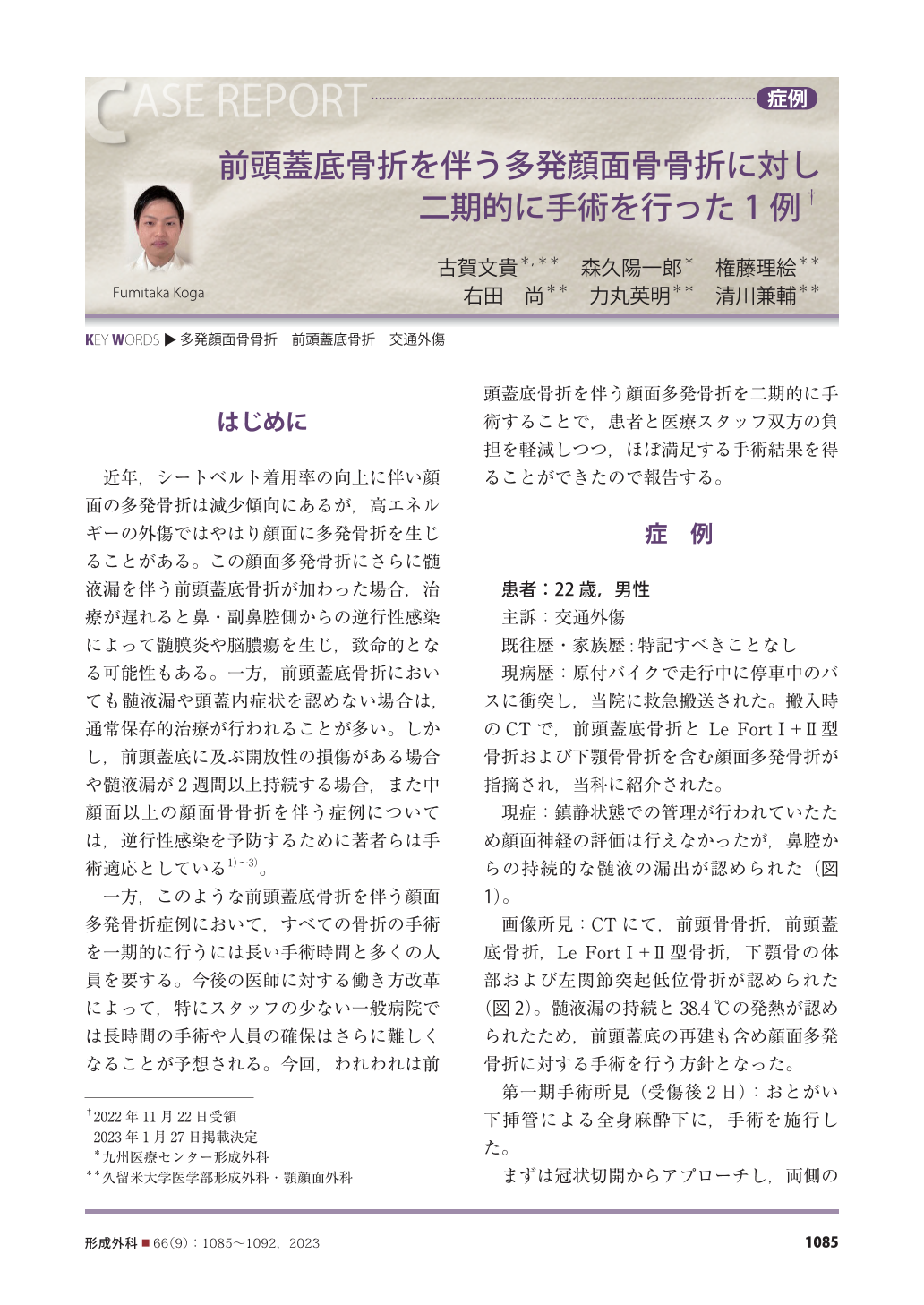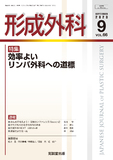Japanese
English
- 有料閲覧
- Abstract 文献概要
- 1ページ目 Look Inside
- 参考文献 Reference
はじめに
近年,シートベルト着用率の向上に伴い顔面の多発骨折は減少傾向にあるが,高エネルギーの外傷ではやはり顔面に多発骨折を生じることがある。この顔面多発骨折にさらに髄液漏を伴う前頭蓋底骨折が加わった場合,治療が遅れると鼻・副鼻腔側からの逆行性感染によって髄膜炎や脳膿瘍を生じ,致命的となる可能性もある。一方,前頭蓋底骨折においても髄液漏や頭蓋内症状を認めない場合は,通常保存的治療が行われることが多い。しかし,前頭蓋底に及ぶ開放性の損傷がある場合や髄液漏が2週間以上持続する場合,また中顔面以上の顔面骨骨折を伴う症例については,逆行性感染を予防するために著者らは手術適応としている 1)~3)。
一方,このような前頭蓋底骨折を伴う顔面多発骨折症例において,すべての骨折の手術を一期的に行うには長い手術時間と多くの人員を要する。今後の医師に対する働き方改革によって,特にスタッフの少ない一般病院では長時間の手術や人員の確保はさらに難しくなることが予想される。今回,われわれは前頭蓋底骨折を伴う顔面多発骨折を二期的に手術することで,患者と医療スタッフ双方の負担を軽減しつつ,ほぼ満足する手術結果を得ることができたので報告する。
Although the incidence of multiple facial fractures is decreasing, high-energy trauma can still result in multiple facial fractures. For patients with anterior skull base fractures, performing surgery for these fractures in one stage requires a long operation time and a large number of personnel. In the future, it will be difficult to perform such long operations due to the effects of work-style reforms for surgeons and other physicians. In this case report, a two-stage surgery for a patient with multiple facial fractures and an anterior skull base fracture yielded satisfactory results for both the patient and the staff. The appropriate division of long-term surgeries into two stages can be a beneficial tool for both patients and medical staff in the future.

Copyright© 2023 KOKUSEIDO CO., LTD. All Rights Reserved.


